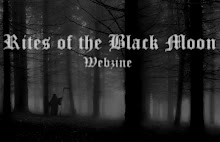


Plot Summary: The movie begins by recapping the end of the previous film. We see Michael get blasted by the state police, only to fall down a mine shaft and get transported down a stream. He's nursed back to health by an old hermit (oddly), whom he kills upon waking up, one year later. In the meantime, Jamie is a mute that has been institutionalized after stabbing her step-mother. She seems to have some telepathic link to Michael, and she desperately tries to warn of his coming. After Michael goes on a killing spree, Loomis and the police use Jamie as bait to lure him back to the old Myers house. Eventually, he gets Loomis and Jamie alone in the house, after hanging the one officer that was protecting her, out the window. There's a touching scene where Jamie attempts to reach out and connect with Michael (at this point, she had regained her ability to speak). He shows some sign of relenting, and a tear rolls down his cheek. She tries to comfort him, but this fills him with rage and he continues with his mission to kill her. She escapes and he then meets with a brutal beating from Dr. Loomis. Of course, this was set up by shooting Myers with a couple tranquilizers. All the while, we've seen minimal shots of a figure dressed in black, arriving in Haddonfield. With Myers locked in a cell, the sheriff calls for the National Guard to come take him away, but the man in black shoots up the police station and causes and explosion. Jamie, who was waiting in a car outside, walks through the ruins of the police station to see all of the officers dead and she is horrified to realize that Michael has escaped. The film ends with her echoing cries, "Nooooo".
Conclusion: At the time, this was one of the weaker films in the Halloween franchise. There are some annoying elements, but the overall atmosphere is there. In the end, it's greatest success is that it did a great job of creating interest in the next movie. Unfortunately, it took six years for Halloween 6: The Curse of Michael Myers to follow up on this and, when it did, the version that was released in theatres made no sense. Still, Donald Pleasance and Danielle Harris both did an incredible job of carrying this movie. As a matter of fact, the two most powerful scenes of the film involved Danielle, one being the aforementioned attic scene with Michael and the other being the eerie realization that he was on the loose again, at the end. Ultimately, this ranks beneath most of its predecessors, as well as the p-cut of Halloween 6, but it's still superior to anything that came out post-1995.
.jpg)













.jpg)
